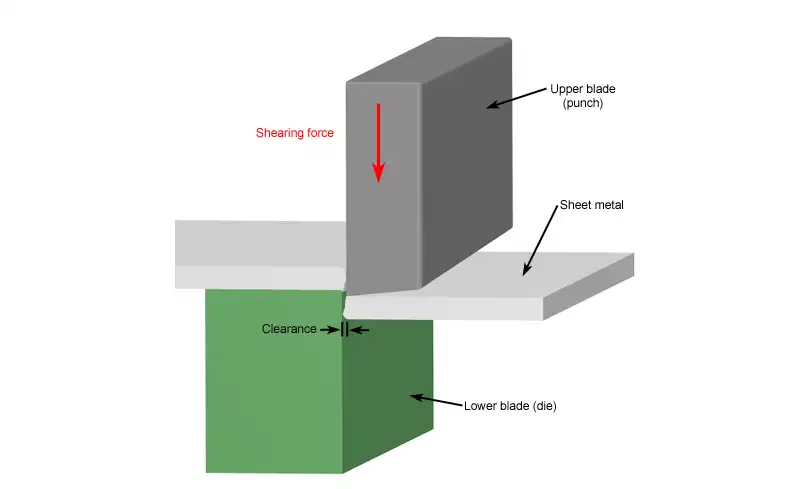Table of Contents
What is Sheet Metal Shears
Sheet metal shears, also known simply as shears, are specialized tools used for cutting sheet metal with precision and accuracy. These shears are designed to handle various thicknesses of sheet metal, ranging from thin gauge to thicker plates, depending on the specific type and capacity of the shear.
Classification of Sheet Metal Shears
Generally, plate shears can be divided into several types: foot-powered shears, mechanical shears, hydraulic swing beam shears, hydraulic guillotine shears, and hydraulic CNC-controlled shears.
Hydraulic shears work by moving the upper blade and the fixed blade with a reasonable blade gap to apply a shearing force to metal plates of various thicknesses, resulting in the plate being cut to the required size.
Sheet metal shears are often used to cut straight-edged blanks. The shearing process should ensure that the shearing surface is linear and parallel to the required specifications, and minimize sheet distortion to produce high-quality workpieces.
Metal cutting shears are a type of forging machinery, mainly used in the metal processing industry. These products are widely used in industries such as light industry, aviation, shipbuilding, metallurgy, instrumentation, electrical appliances, stainless steel products, steel construction, and decoration.

Types of Sheet Metal Shears
Special Metal Shears
Often, metal shears are used in conjunction with other equipment to fulfill specific purposes:
Cold-formed line plate cutting machines: These shears are specially used in car longitudinal beam cold bending lines, car side baffle production lines, and color plate forming lines.
Metal shears used in steel structure production lines: These are mainly used in angle steel and H-beam automatic production lines to complete the cutting process.
Plate open line metal shears: These are designed for plate uncoiling lines to meet the requirements of fast production lines.
Thick plate lines mostly use hydraulic high-speed plate cutting machines, while thin plate lines are usually equipped with pneumatic metal cutting machines. High-speed lines use flying shear machines, which are known for their continuous production and high efficiency.
Inclined blade shear
The upper and lower blades of the metal shearing machine are angled, with the upper blade typically inclined at an angle of 1° to 6°.
The cutting force of an inclined blade shear is smaller than that of a flat blade shear, which leads to a reduction in motor power and the overall weight of the machine.
Flat blade shear
Shearing quality is good with minimal twisting deformation, but it requires a large shearing force and energy consumption. Most machines use mechanical transmission.
The cutting edges of the cutting machine are parallel to each other and are commonly used in rolling mills for hot billet and slab shearing. They can be divided into upper cutting and lower cutting methods.
Multi-purpose metal shears
Joint punching and shearing machine (ironworker machine): This machine is used to complete the shearing of plates, as well as cutting profiles, and is mainly used for the blanking process.
Conclusion
Sheet metal shears are essential tools in various industries, including metal fabrication, automotive manufacturing, aerospace, construction, and more. They enable efficient and precise cutting of sheet metal components and parts, contributing to the production of a wide range of products and structures.




